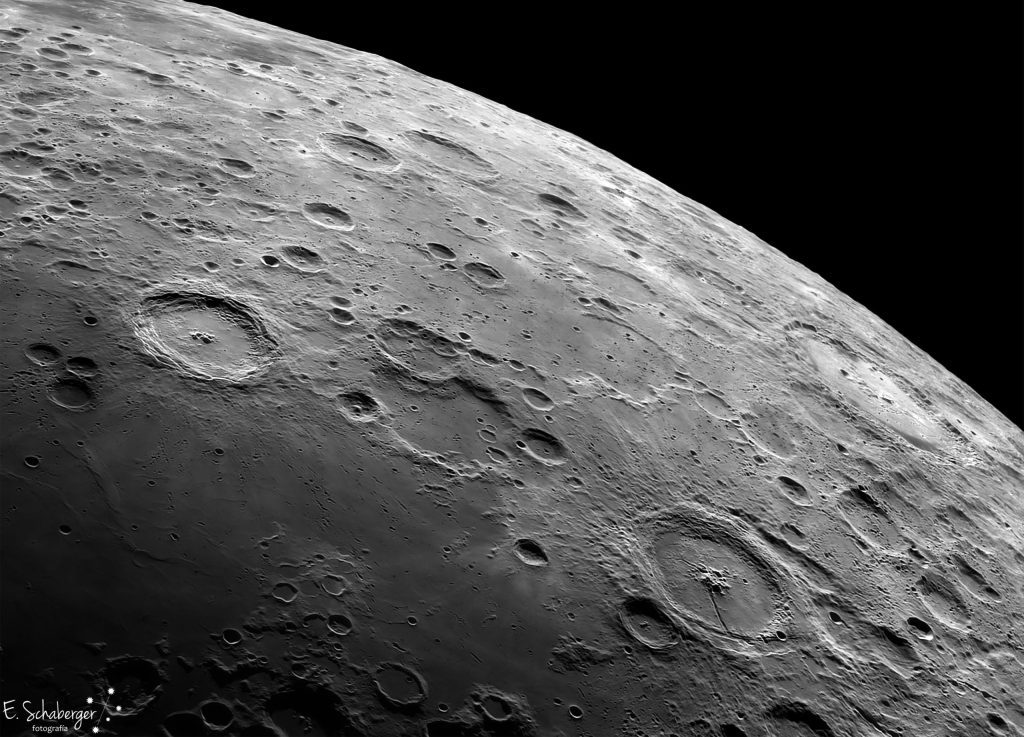
Lunar glass shows the effects of the moon asteroid mirrored on Earth
Scientists have discovered that asteroid impacts on the moon millions of years ago precisely coincided with some of the largest meteorite impacts on Earth, such as the one that wiped out the dinosaurs.
In addition, the new research study also discovered that the major impact events on Earth were not stand-alone events, but were accompanied by a series of smaller impacts. These findings shed light on asteroid dynamics in the inner solar system, including the potential for destruction of Earth-bound asteroids.
Led by Curtin University, the international research team studied microscopic glass beads up to two billion years old that were discovered in lunar soil returned to Earth in December 2020 as part of China’s National Space Agency’s Chang’e-5 lunar mission. . Since the heat and pressure from meteorite impacts caused the formation of the glass beads, their age distribution should mimic the impacts, revealing a bombardment timeline.
According to lead author Professor Alexander Nemchin, of Curtin University’s Space Science and Technology Center (SSTC) in the School of Earth and Planetary Sciences, the findings suggest that the timing and frequency of asteroid collisions on the Moon may be reversible on Earth. Let us know more about the history of the evolution of our planet.
“We have combined a wide range of microscopic analytical techniques, numerical modeling, and geological surveys to determine how and when these microscopic glass grains formed from the Moon,” said Professor Nemchin.
“We found that some age groups of lunar glass beads match up precisely with the ages of some of the largest terrestrial impact crater events, including the Chicxulub impact crater responsible for the dinosaur extinction event.
The study also found that large impact events on Earth, such as the Chicxulub crater 66 million years ago, could be accompanied by a number of smaller impacts. If true, it suggests that the age and frequency distributions of impacts on the Moon may provide valuable information about impacts on Earth or the inner solar system. “
Future comparative studies could give further insight into the geological history of the Moon, said study co-author Katharina Milikovic, of the Curtin Center for Science, Technology and Innovation in Curtin.
“The next step will be to compare the data from the Chang’e-5 samples with other lunar soils and crater ages to be able to reveal other important lunar impact events that may in turn reveal new clues about what impacts they might have,” said Associate Professor Milikowicz.
Reference: “Restriction of Formation and Transfer of Lunar Impact Spectacles Using Ages and Chemical Compositions of Chang’e-5 Glass Beads” by Tao Long, Yuki Qian, Mark de Norman, Katrina Melkovitch, Caroline Crowe, James W. Head, Xiaochao Che, Romain Tartèse, and Nicolle Zellner, Xuefeng Yu, Shiwen Xie, Martin Whitehouse, Katherine H. Joy, Clive R. Neal, Joshua F. Snape, Guisheng Zhou, Shoujie Liu, Chun Yang, Zhiqing Yang, Chen Wang, Long Xiao, Donnie Liu and Alexander Nemshin, Sep 28, 2022 Available here. science progress.
DOI: 10.1126 / sciadv.abq2542
The international collaboration was supported by the Australian Research Council and included researchers from Australia, China, USA, UK and Sweden including co-authors Dr. Mark Norman from Australian National UniversityDr. Tao Long of the SHRIMP Center in Beijing at the Chinese Academy of Geosciences and doctoral student Yuki Qian of the China University of Geosciences.





More Stories
Boeing May Not Be Able to Operate Starliner Before Space Station Is Destroyed
Prehistoric sea cow eaten by crocodile and shark, fossils say
UNC student to become youngest woman to cross space on Blue Origin